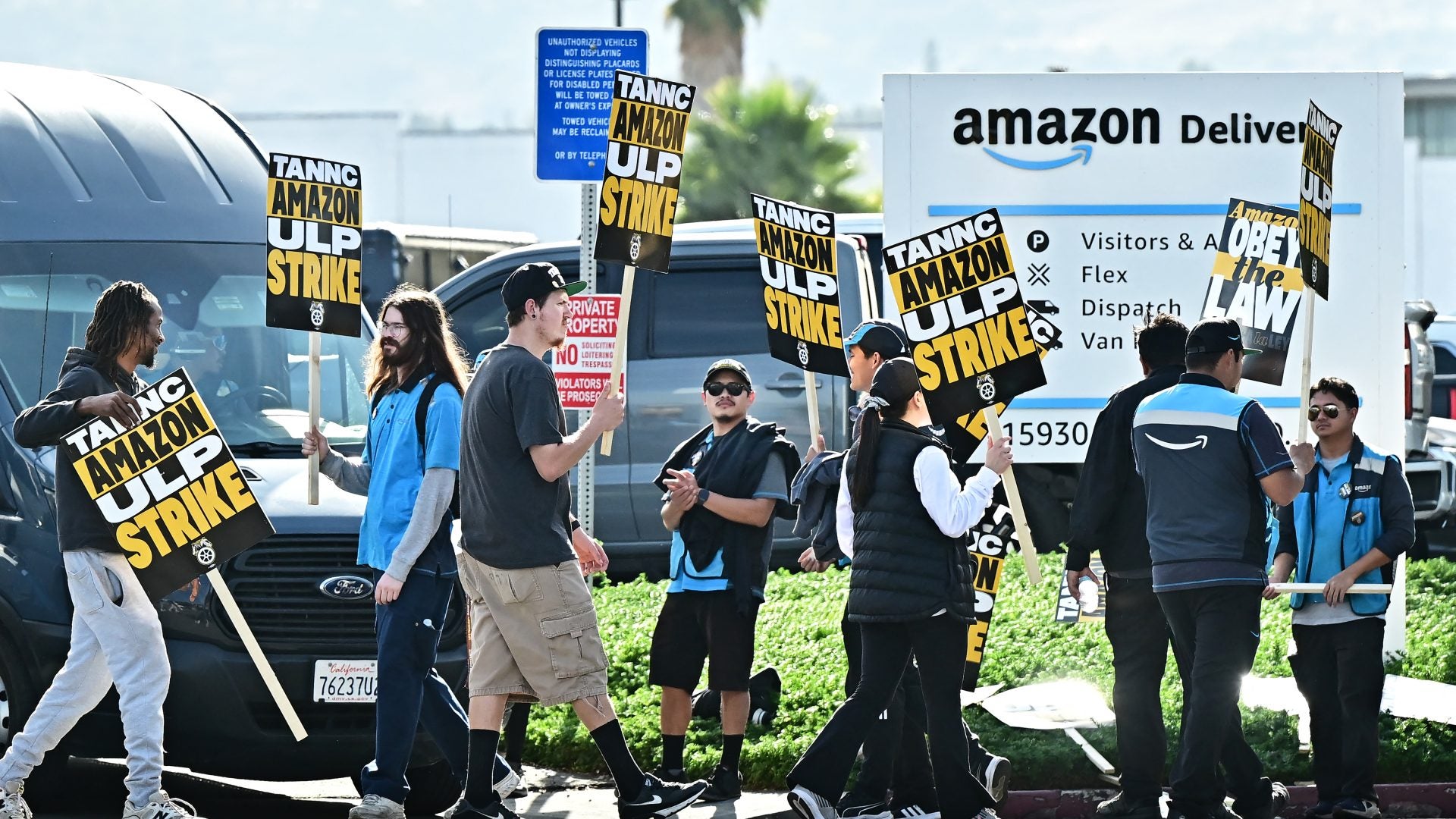
Just days before Christmas, thousands of Amazon workers walked off the job, threatening to disrupt the on-time delivery of holiday gifts during the busiest shopping season of the year.
Nearly 9,000 workers, affiliated with the influential International Brotherhood of Teamsters, took to the picket lines in what they’re calling “the largest strike against Amazon in U.S. history,” ABC News reports.
Their goal? To pressure the nation’s largest e-commerce giant into bargaining with its unionized employees.
While the striking workers make up less than 1% of Amazon’s massive global workforce of 1.5 million, including 800,000 employees in the U.S., their timing during the holiday rush was a strategic move to amplify their demands and spotlight their grievances.
“If your package is delayed during the holidays, you can blame Amazon’s insatiable greed,” Teamsters President Sean M. O’Brien said in a statement on Thursday, ABC News reports.
As consumers eagerly await their gifts, the walkout could ripple across Amazon’s fulfillment network. According to the company, the network processed a staggering 5.9 billion U.S. delivery orders in 2023 alone.
The strike comes after the Teamsters set a December 15 deadline for Amazon to begin collective bargaining negotiations. According to the union, the company failed to meet the deadline, leaving workers no choice but to walk out.
“We gave Amazon a clear deadline to come to the table and do right by our members. They ignored it,” O’Brien said. These greedy executives had every chance to show decency and respect for the people who make their obscene profits possible. Instead, they’ve pushed workers to the limit, and now they’re paying the price. This strike is on them.”
Workers formed picket lines at seven major fulfillment centers, including Staten Island, New York; Skokie, Illinois; Atlanta, Georgia; San Francisco; and Southern California. The Staten Island site, notable for its workers voting to unionize in 2022, has been a focal point in Amazon’s ongoing labor disputes, with employees accusing the company of refusing to negotiate a contract.
Amazon, however, is calling the strike a publicity stunt. In a statement, the company dismissed the Teamsters’ claims, arguing that the workers walking the picket lines are not Amazon employees.
“What you see here are almost entirely outsiders—not Amazon employees or partners—and the suggestion otherwise is just another lie from the Teamsters,” said Amazon spokesperson Eileen Hards. “The truth is that they were unable to get enough support from our employees and partners and have brought in outsiders to come and harass and intimidate our team, which is inappropriate and dangerous.”
Another Amazon spokesperson, Kelly Nantel, doubled down, labeling the Teamsters’ efforts as “illegal” and asserting that the union does not represent Amazon employees.
“We don’t expect any impact on our operations,” Nantel added.
The Teamsters paint Amazon executives as modern-day Grinches, citing the company’s $2.3 trillion valuation as evidence of its ability to pay and treat workers fairly.
Meanwhile, workers on the ground say they’re not backing down. The holiday rush is their leverage, and they’re banking on consumer pressure to push the e-commerce behemoth into negotiations.
Whether this strike leads to delays in holiday deliveries remains to be seen. Amazon’s contracts with the U.S. Postal Service and UPS may buffer its operations for now. But the strike underscores a larger, simmering debate about labor rights, corporate power and the value of the workers who drive the nation’s largest e-commerce platform.
As the picket lines grow and the holiday clock ticks down, all eyes are on Amazon—and the workers who say they’re fighting for a fair slice of the pie they helped make.